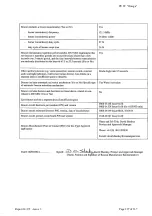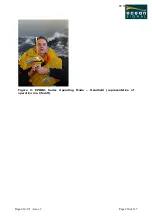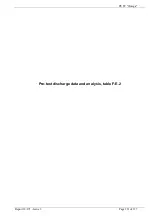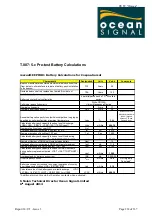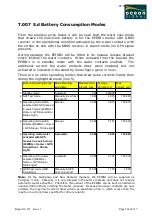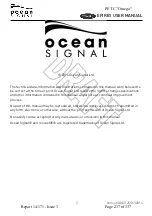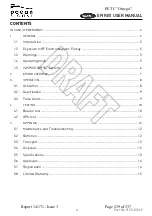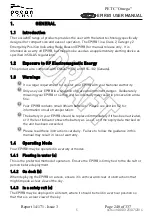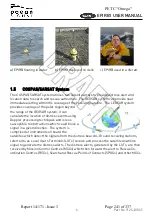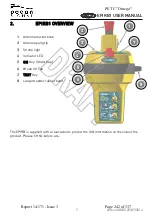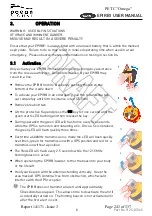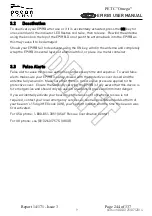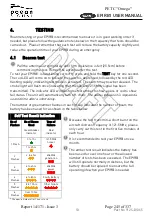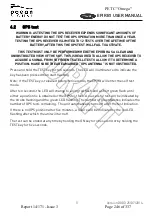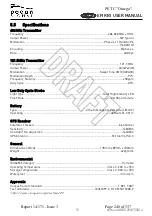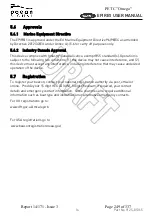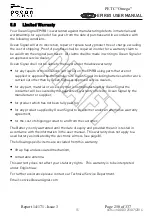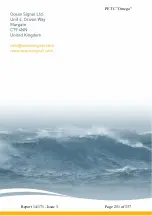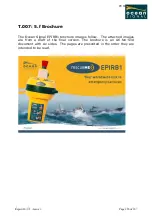
EPIRB1 USER MANUAL
6
Part No 912S-01365
a) EPIRB floating in water
b) EPIRB deployed on deck
c) EPIRB used in a liferaft.
1.5
COSPAS/SARSAT System
The COSPAS/SARSAT system utilises two satellite arrays to provide distress alert and
location data to search and rescue authorities. The GEOSAR system can provide near
immediate alerting within the coverage of the receiving satellite. The LEOSAR system
provides coverage of the polar region beyond
the range of the GEOSAR system. It can
calculate the location of distress events using
Doppler processing techniques and is less
susceptible to obstructions which could block a
signal in a given direction. The system is
comprised of instruments on board the
satellites which detect the signals from the distress beacons. Ground receiving stations,
referred to as Local Users Terminals (LUTs) receive and process the satellite downlink
signal to generate the distress alerts. The distress alerts, generated by the LUTs, are then
received by Mission Control Centres (MCCs) which then forward the alert to Rescue Co-
ordination Centres (RCCs), Search and Rescue Points of Contacts (SPOCs) and other MCCs.
PE TC "Omega"
Report 14/171 - Issue 3
Page 241 of 337
Summary of Contents for rescueME EPIRB1
Page 1: ...PE TC Omega Report 14 171 Issue 3 Page 224 of 337 ...
Page 2: ...PE TC Omega Report 14 171 Issue 3 Page 225 of 337 ...
Page 3: ...PE TC Omega Report 14 171 Issue 3 Page 226 of 337 ...
Page 4: ...PE TC Omega Report 14 171 Issue 3 Page 227 of 337 ...
Page 28: ...16 Version 00 03 25 07 2014 PE TC Omega Report 14 171 Issue 3 Page 251 of 337 ...
Page 34: ...PE TC Omega Report 14 171 Issue 3 Page 257 of 337 ...

